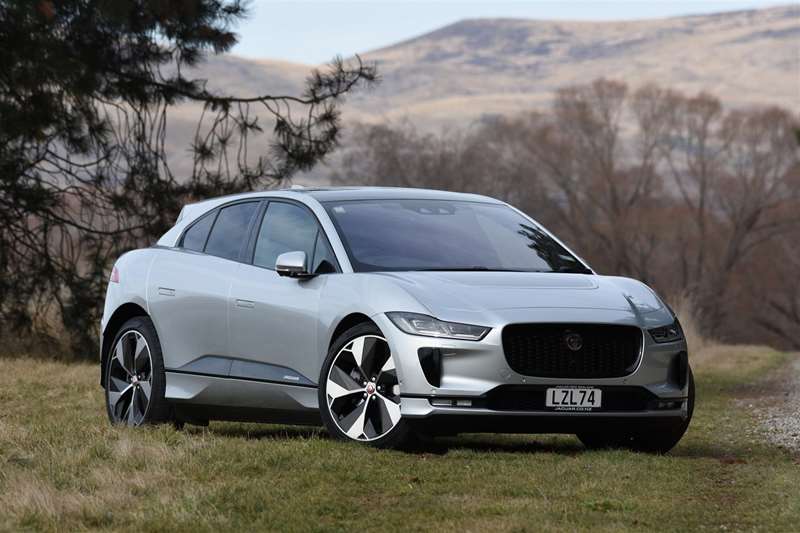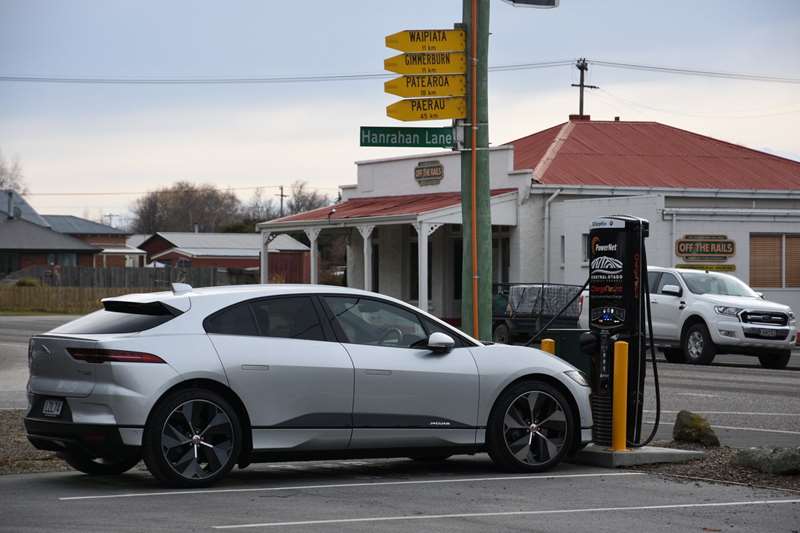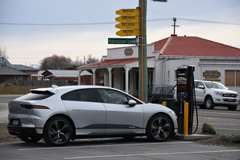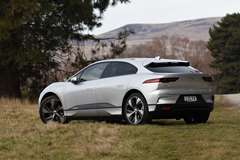The award-winning Jaguar I-Pace, is one of the first cars from an established brand to take on Tesla at its own game. David Thomson delivers his verdict on this important new machine.
What’s New?
With both the World and European Car of the Year trophies secured, alongside numerous other international awards, the new I-Pace is a vehicle of massive significance for the automotive world.
Jaguar’s first all-electric zero-emissions model is, in essence, the first counterpunch by the world’s established luxury brands at Tesla’s Model X SUV.
Under its sleek exterior, the I-Pace is based on a bespoke electric-vehicle (EV) platform, and is brimming with design and engineering innovation.
Rumoured to account for a blistering 40% of the vehicle’s production cost, the I-Pace’s lithium-ion battery, contains 432 separate cells with a total capacity of 90kW hours. To optimise handling balance and interior space, the battery is located within the vehicle’s wheelbase.
That battery powers a pair of Jaguar-developed electric motors, one driving the front wheels, and the other the back. So yes, the I-Pace is a legitimate four-wheel drive. So emphatically legitimate that, despite its rakish looks, it’s equipped with a special offroad mode, and has a 600mm wading depth.
At the other extreme, it has a high-performance dynamic mode, in which the combined 294kW/ 696Nm outputs of its motors enable the I-Pace to sprint from 0-100kmh in 4.8 seconds. Not bad for a vehicle which, despite the extensive use of aluminium in which Jaguar is so well versed, tips the scales at about 2.2 tonnes.
New Zealand takes a range comprising three models, opening with the $144,900 I-Pace S, and topping out with the $164,900 I-Pace HSE. The intermediate model — the $154,900 SE — was supplied for appraisal, albeit equipped with a few extras.
What’s it like to look at?
Line-up the I-Pace against the Tesla Model X and Audi e-tron in an automotive beauty contest, and the Jaguar is the winner, hands-down.
Without the need to accommodate a bulky internal combustion engine and transmission up front, the I-Pace adopts a cabin-forward design with minimal overhangs and a wheelbase longer than that of Jaguar’s XF saloon.
Featuring a blunt snout, in which air is vented through the leading edge of the bonnet, there’s a supercar on-steroids look upfront. The strong rising waistline ends in a distinctively squared off tail that helps with aerodynamic efficiency. There’s plenty of neat detailing, such as door handles that pop out when required but otherwise sit flush with the bodywork.
Finished in silver, one of the more conservative colour options on the I-Pace colour palette, the test car received a visual lift courtesy of 22-inch carbon-alloy wheels and 255/40 tyres, replacing the SE’s usual 20-inch rims and 245/50 tyres.
What’s it like inside?
The cab-forward design and long wheelbase relative to overall length is great news for interior room, as is the flat, floor-mounted battery.
Standard luggage capacity of 505 litres below the rear load cover and 656 litres all-up may surprise those who associate battery-powered cars with limited boot space. In a similar vein, the boot (accessed via a power-operated tailgate) maintains a full-length floor when the rear seats are folded down, expanding to a 1453-litre capacity. There’s also a small (27-litre) luggage space under the bonnet, referred to in Jaguar parlance as the ‘‘froot’’.
Helped by the I-Pace being a shade over 2m wide, the rear of the cabin is very spacious, with leg, head and shoulder room aplenty. The SE’s panorama roof ensures plenty of light in the back, and handy features such as storage cubbies under the back seats, keep everything neat and tidy.
Up front there are broad, yet supportive, seats, deftly crafted to provide a blend between a command-style and sporty seating position.
The overall cabin aesthetic strikes a balance between conventional opulence and the starker, technology-dominated design of Tesla and contemporary Volvo SUVs.
Finished with dark charcoal as the predominant trim colour, the test car featured soft-touch surfaces throughout the cabin, metallic dash inserts in brushed/patterned metal as well as cream-coloured door inserts matched by the contrast stitching on the seats.
Hi-tech elements include the wide centre-touchscreen, digital instrument cluster, and — because a pure EV does not require gears — a set of buttons on the console to replace a conventional gear selector.
What comes as standard?
The ‘‘basic’’ I-Pace S offers LED lights, auto-dipping headlights, dual-zone climate control, power-operated front seats, keyless entry and push button start, six USB ports, voice control, satellite navigation, smartphone mirroring and a premium 11-speaker Meridian sound system. Its dynamic and safety specification includes all-wheel-drive, torque-vectoring, speed-sign recognition, a driver-condition monitor, lane-keeping assistance and a comprehensive parking-assistance system with a 360-degree surround-view camera and rear-cross-traffic alert.
The SE, as tested, takes more advanced LED headlights, leather-trimmed seats, adaptive cruise control with stop and go functionality, high-speed emergency braking, and blind-spot assistance.
Extensive customisation options are also available.
What’s it like to drive?
Around town, the test car was everything you’d expect of an EV in terms of being smooth and super-quiet, riding exceptionally well, notwithstanding the constraints of sheer size that any vehicle of its large SUV-ilk exhibits in an urban environment. The silence is broken by creaking brakes when setting off and a truck-like beeping when reversing, the latter designed, presumably, to alert pedestrians to the I-Pace’s presence.
The less aggressive of the vehicle’s two regenerative braking modes is the easier to master around town though the more intrusive one would likely deliver superior economy.
Proceed beyond city limits, floor the accelerator, and there’s immediate reward in terms of utterly compelling thrust. While the EV benefit of maximum torque from instant revs measures itself most obviously in that 4.8sec 0-100kmh sprint time, that is only part of the picture; more telling is an instant response from cruising speed that enables exceptionally rapid, assured overtaking. In dynamic mode, full-blooded acceleration is accompanied by an electronic whir akin to a science fiction starship heading for warp speed.
On smooth asphalt, highway cruising is refined, with mild wind roar the only aural intrusion. The coarse-chip seal that predominates on our highways dents that refinement, abetted by the road-roar inducing nature of the test car’s wider and lower-than-standard tyres. That aside, extended highway driving was relaxing, helped by the I-Pace’s fine ride, and, when in traffic, adaptive cruise control.
Venturing off main routes in the I-Pace can take one in two very different directions.
Firstly on to gravel or off-road, the latter made easy by a ride-height raising function for the car’s air suspension. Noting also a capacity to wade through 600mm of water, and excellent approach and departure angles, the I-Pace’s back-trail ability will likely exceed that of its typical driver. On test, it was excellent in thick gravel.
Secondly, down a winding tarmac back road, in search of the kind of dynamic rewards that few SUVs and even fewer EVs typically seek. Here the I-Pace is, by the standards of either class of vehicle, hugely impressive.
Sure, it feels big and heavy when pushed though twists and turns, but with much of its mass located low and positioned for a near 50:50 front:rear distribution, the I-Pace also corners flat, with surefooted balance. The steering more so than the brakes inspire confidence in a vehicle that is a genuinely rewarding corner-by-corner machine.
How far will it go?
The I-Pace attracted considerable attention on test, and once folk had moved beyond admiring its good looks and marvelling at its status as an EV, there was always the same question: how far before you need to recharge it?
The I-Pace has a nominal range of somewhere between 375km and 415km.
But, as is the case with most EVs, the figures produced by nominal or ‘‘certified’’ tests are not representative of what a typical user will achieve in the real world.
Having completed one simulated Dunedin to Queenstown run, and various other tests in and around Dunedin, my verdict is as follows: set out on a highway journey in an I-Pace that is fully charged and moderately laden with passengers and luggage, you can have complete confidence in its ability to complete 250km travelling at everyday speeds without the need to recharge; lightly laden, carefully driven, in favourable conditions with few hills, and probably running on narrower tyres than the test car’s 255/40 examples, something over 300km should be possible.
Verdict
Aside from a likely real-world range that disappoints somewhat against its notional benchmark, there is precious little to criticise in the sleekly-styled and sharp-performing new Jaguar I-Pace.
How the I-Pace will stack up in a year or so, when other manufacturers have their rough equivalents on sale remains to be seen.
But for now, as a string of international awards already signal, it’s a ground-breaker for the established premium brands as well as for Jaguar itself, and one that Tesla, in particular, should view with serious concern.
Photos: David Thomson












